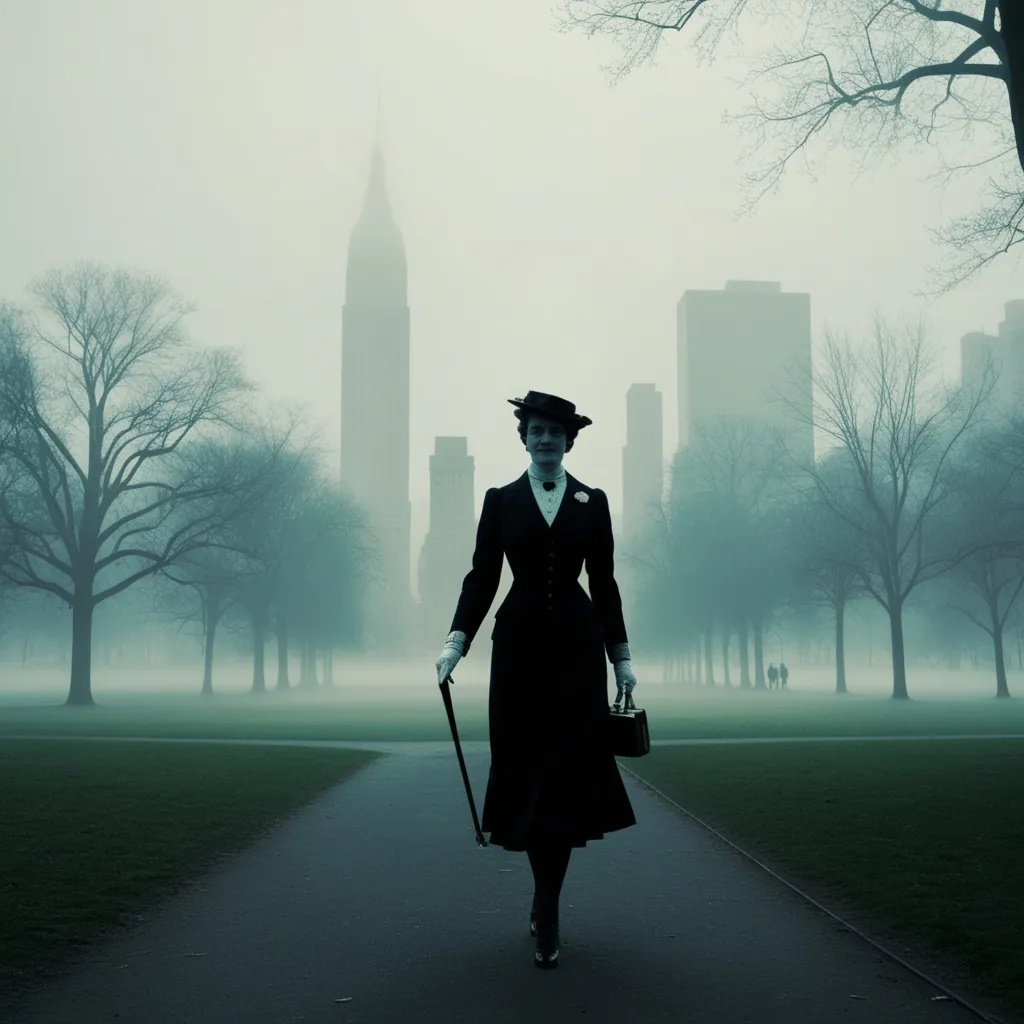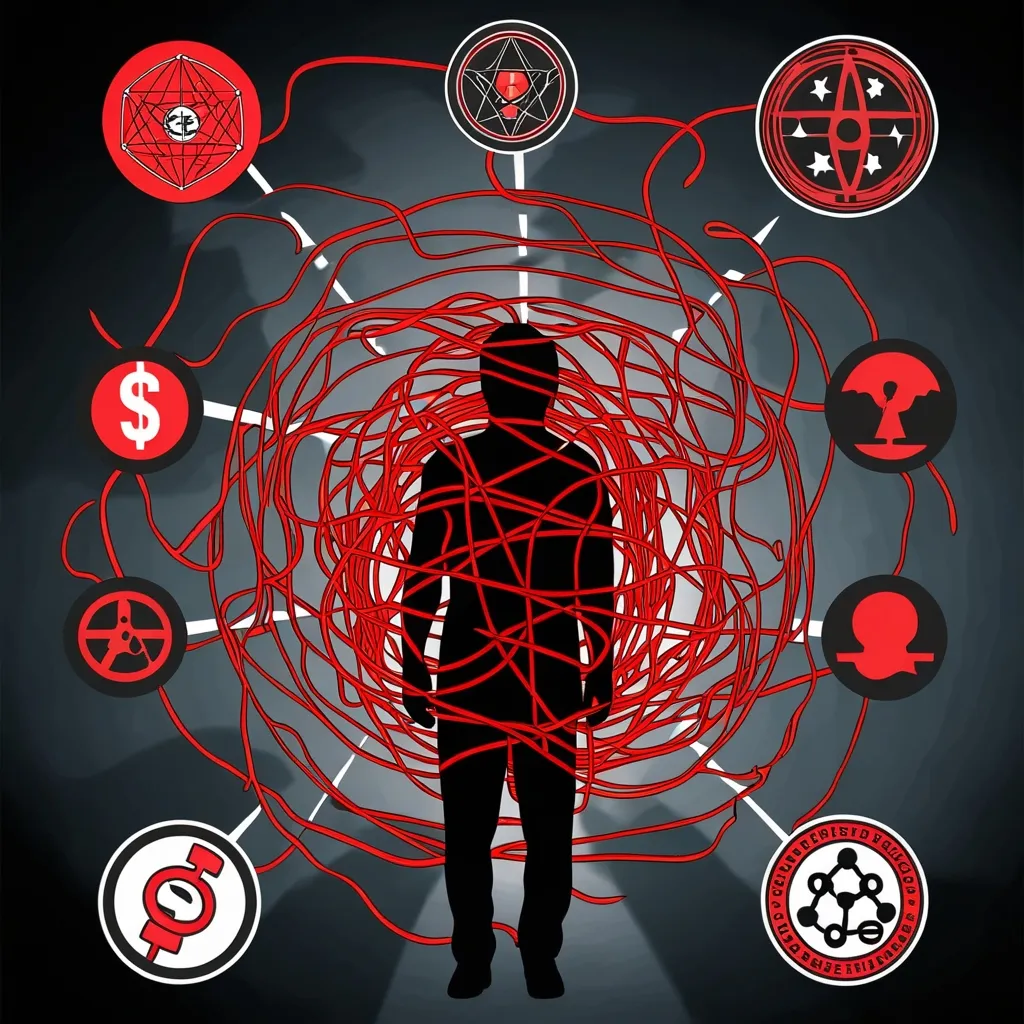The Vanishing Heiress: The Unsolved Mystery of Dorothy Arnold
On a crisp December day in 1910, New York City became the setting for one of the most baffling disappearances in American history. Dorothy Harriet Camille Arnold, a 25-year-old heiress to a perfume fortune, vanished without a trace, leaving behind a century-old mystery that continues to captivate the public imagination.
Picture this: a young woman, impeccably dressed in a tailored suit, blue serge coat, and a tight hobble skirt, topped with a distinctive black velvet hat adorned with two blue roses. She’s carrying a huge silver-fox muff and a satin handbag, making her stand out even in the bustling streets of New York. This was Dorothy Arnold on December 12, 1910, the day she disappeared.
It started as a typical day for Dorothy. She was out shopping for an evening gown for her sister’s upcoming debutante ball. She stopped at Park and Tilford candy store for some chocolates, then popped into Brentano’s bookshop on Fifth Avenue and 27th Street. There, she bought a humor book called “An Engaged Girl’s Sketches” and bumped into her friend Gladys King. They chatted briefly before Dorothy continued on her way. Little did Gladys know, she would be the last person to see Dorothy alive.
Dorothy had plans to take a stroll through Central Park and then meet her mother for lunch at the swanky Waldorf-Astoria hotel. But she never showed up for lunch. When she didn’t come home for dinner either, her family started to worry. This was completely out of character for Dorothy, who always let her family know if she was going to miss a meal.
Now, here’s where things get weird. Instead of calling the police right away, the Arnold family decided to do their own investigation. They were worried about negative publicity tarnishing their social standing. So, they called in a lawyer friend of Dorothy’s older brother to act as a private detective. This guy, John S. Keith, ended up searching hospitals, morgues, and even prisons in New York, Boston, and Philadelphia.
When Keith searched Dorothy’s room, he found some pretty interesting stuff. There were letters with foreign postmarks and transatlantic steamship folders on her desk. In the fireplace, he found a small pile of burned papers. The family claimed these were probably Dorothy’s rejected manuscripts, but there was no visible writing on the charred remains. Suspicious, right?
The family also hired the Pinkerton detective agency to look for Dorothy. These guys searched everywhere – shops, hospitals, friends’ homes, even the morgue. But there was no sign of her. It wasn’t until six weeks after she disappeared that the family finally went public with the case.
When the news broke, it was like a bomb went off. Dorothy’s picture was in newspapers all over the world. Everyone was looking for the missing heiress. The police were flooded with sightings and tips, but most of them turned out to be false leads or cruel pranks. Some jerks even sent fake ransom notes to the family, demanding $5,000 for Dorothy’s safe return.
One of the wildest leads came from a guy named Edward Glennoris, who was in prison in Rhode Island. He claimed someone paid him $250 to get rid of a woman’s body around the time Dorothy disappeared. According to Glennoris, a man called ‘Little Louie’ hired him to move an unconscious woman to Weehawken, New Jersey. But when he went back to the house to finish the job, the woman was already dead. Glennoris’s story pointed fingers at Dorothy’s boyfriend, George C. Griscom Jr., but this lead eventually went nowhere.
Speaking of George Griscom Jr., he was a pretty important figure in Dorothy’s life. He was a 42-year-old engineer from Philadelphia, and they were keeping their relationship secret from her family because they didn’t approve. When they found friendly letters from Griscom in Dorothy’s room, it revealed a deeper connection between them. Even though Griscom was in Italy when Dorothy disappeared, some people thought maybe she had run away to be with him, or that she had died during a botched abortion.
Dorothy’s father, Francis R. Arnold, was convinced his daughter had been kidnapped and murdered. Francis was a wealthy and influential guy, having inherited a bunch of money and made even more as the head of F.R. Arnold & Company, importers. He was so sure Dorothy had been murdered that he publicly promised to spend every dollar he had to avenge her death.
In the years following Dorothy’s disappearance, people came up with all sorts of theories. Some thought she might have taken her own life because she kept getting rejected as an aspiring writer. Others believed she had planned her own disappearance to start a new life away from her family’s restrictions. There was even a story about a riverfront merchant who claimed a mysterious young woman, who looked like Dorothy, tried to trade her jewelry for clothes to disguise herself as a man.
Despite all the investigations and leads, Dorothy Arnold’s case remains one of the biggest unsolved mysteries in American history. People are still talking about it, writing articles, making podcasts, and discussing it in online forums. Everyone’s trying to figure out what happened on that December day over a century ago.
The Dorothy Arnold case is a stark reminder that even the most seemingly perfect lives can have hidden complexities and secrets. It’s a story about love, family, and the never-ending search for truth, all set against the backdrop of a society with strict social rules.
As we keep speculating about what might have happened to Dorothy, one thing’s for sure: her mysterious disappearance will continue to fascinate people for generations to come. It’s not just a story about a missing person; it’s about our human desire to uncover the truth, no matter how elusive it might be.
In the end, the case of Dorothy Arnold is a testament to the enduring power of mystery and our relentless pursuit of answers, even when we’re faced with overwhelming uncertainty. Sometimes, the most intriguing mysteries are the ones that remain unsolved, leaving us with more questions than answers.
So, next time you’re walking down Fifth Avenue in New York, take a moment to look around. Maybe you’ll catch a glimpse of a young woman in a black velvet hat with two blue roses, carrying a silver-fox muff. Who knows? The ghost of Dorothy Arnold might still be wandering the streets, holding onto her secrets.






